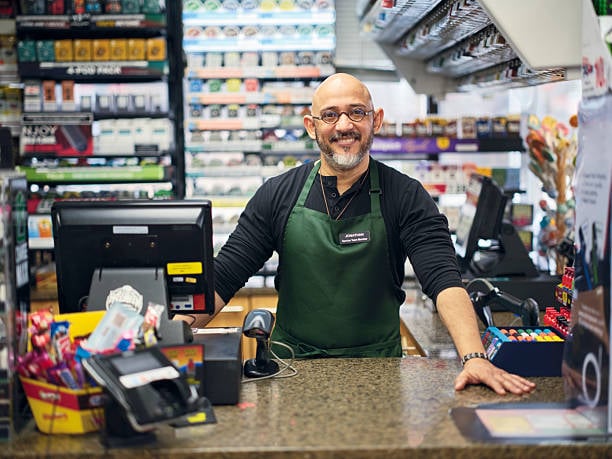
Retail is being redefined by experience. After years of e-commerce dominance, physical stores are making a comeback — but not as we knew them. They are now immersive environments that blend digital and physical engagement. In this new retail era, the facility itself has become a silent influencer of brand perception, sales, and loyalty.
According to the National Retail Federation, more than 70 percent of retail sales in the U.S. still occur in physical stores, and nearly 80 percent of shoppers are more likely to buy in person when the store environment feels clean, comfortable, and consistent. Yet many facilities teams are still viewed as a back-office cost center rather than a brand driver.
That mindset is changing. The best-performing retailers now view facilities management as a strategic discipline — one that protects revenue, reduces energy waste, and ensures the store experience lives up to the brand promise.
1. The Facilities Experience Is the New Customer Experience
In the world of retail, every operational detail shapes perception. Shoppers may not consciously notice a flickering light or a malfunctioning air conditioner, but subconsciously, these cues influence how they feel about the brand.
Research by ServiceChannel found that 70 percent of consumers have a negative impression of a retailer after encountering poorly maintained stores, and 64 percent say they have left a store due to facility issues such as temperature, lighting, or cleanliness.
A store can spend millions on design and merchandising, but if the environment feels neglected, it sends a message of inconsistency. Facilities leaders are now the stewards of that message. Their work directly shapes how customers experience the brand every day.
2. Retail’s Hidden Inflation: The Cost of Inefficient Maintenance
Operating costs are rising across the retail landscape. The Bureau of Labor Statistics reports that maintenance and repair costs have increased more than 15 percent since 2021, outpacing both inflation and wage growth.
These costs are often hidden in fragmented vendor contracts, unverified invoices, and reactive repair models. Many retailers still rely on emergency maintenance, which can cost up to 5 times more than scheduled preventive maintenance, according to FacilitiesNet data.
This “hidden inflation” compounds over time. Deferred maintenance can reduce asset life by as much as 30 percent and lead to more frequent capital replacements. For multi-site retailers, even a 3 percent improvement in maintenance efficiency can translate to millions in annual savings.
3. Data is the New Utility
Retailers have long measured foot traffic, sales per square foot, and conversion rates, but few have applied the same discipline to facilities data. Today’s leading organizations are changing that.
Modern facilities leaders are leveraging data to answer critical questions:
-
Which store regions have the highest energy intensity per square foot?
-
How do repair cycle times correlate with customer satisfaction?
-
Which assets are driving the most downtime or rework?
By linking facilities data to business metrics, retail leaders can make smarter capital decisions. For example, using predictive analytics to identify HVAC units that are underperforming before they fail reduces downtime and preserves comfort — a key factor in both employee retention and customer experience.
Retailers that collect and use real-time facility data report up to 25 percent lower unplanned repair costs and 10 to 15 percent improvement in overall energy efficiency, according to Verdantix.
4. Designing a Future-Ready Facilities Strategy
To keep pace with evolving expectations, retailers are building smarter facilities frameworks centered around four priorities:
1. Reliability over reaction.
Preventive maintenance should represent at least 70 percent of total activity. Every unplanned outage avoided protects brand experience and reduces total cost of ownership.
2. Data visibility and benchmarking.
Retailers should benchmark key metrics such as mean time to repair (MTTR), cost per work order, and equipment uptime by region or store format. Consistent visibility drives better accountability across vendors and trades.
3. Sustainability through efficiency.
Lighting retrofits, HVAC optimization, and energy analytics are now strategic imperatives. The U.S. Department of Energy notes that commercial buildings waste up to 30 percent of the energy they consume, most of it from inefficient equipment or scheduling.
4. Cross-functional collaboration.
Facilities, operations, and finance must share a common data set and language. When these functions align, facilities move from cost management to value creation.
5. The Next Chapter of Retail Facilities Leadership
Retail’s future will be shaped by those who see facilities not as maintenance, but as brand performance management. The next generation of Facilities Directors will use analytics, AI, and strategic vendor partnerships to anticipate problems before they occur and measure success in business outcomes, not just repairs completed.
The most successful retail brands will view their physical environments as extensions of their marketing strategy — spaces that are always on, always inviting, and always aligned with the brand’s identity.
Conclusion
Facilities excellence is now retail’s competitive edge. In a world where consumers expect frictionless experiences, every working light, clean surface, and functioning air system tells a story of reliability and care.
For retail executives, the opportunity is clear. Build facilities strategies that are proactive, data-informed, and experience-driven. Treat every maintenance decision as a customer touchpoint. When facilities perform with precision, so does the brand.
Let’s talk.
Get in touch and fill out the contact form below!




